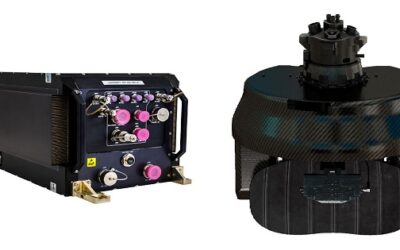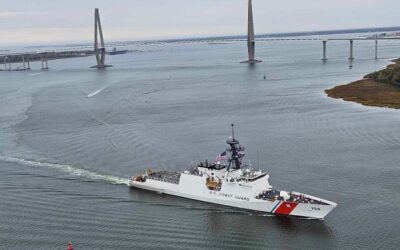Brand New; New Force; New from Old
Today’s attack helicopters are based on designs that are at least over 30 years old, some older than that. The Boeing AH-64 Apache first flew in September 1975, the Leonardo A129 Mangusta in September 1983 and even the relative newcomer, the Airbus Helicopter Tiger, first flew over 25 years ago in August 1991.
While it is true that all models have undergone modernisations and upgrades, particularly to software and avionics over the years, the basic airframe design has still been a limiting factor to improving rotorcraft performance.
Although the only radically new designs to surface in recent years have been those connected to the U.S. Army’s Future Vertical Lift (FVL) requirement (and some would argue that tiltrotors and co-axial helicoprters with pusher-props are not new), their development cycle is just beginning and the eventual choice of aircraft is still not expected to begin entering service until the 2030s. This is why the recent news from Italy regarding the commissioning of a new attack helicopter platform has been somewhat surprising.
A129 Mangusta Successor
In November 2016 it was made public that the Italian Parliament’s defence committee was to allocate €487 million to the study and design of a replacement for the Italian Army’s Leonardo A129 Mangusta attack helicopter. The military helicopters would be made by Leonardo (ex-AgustaWestland) at its plants in Cascina Costa and Vergiate.
The programme is sponsored by Democratic Party congressman for Verese, Daniele Marantelli, who is also a defence committee member. The project’s budget will cover the design and production costs of three prototypes. According to reports citing Marantelli, the new design will have to “lay the foundations for the helicopter [to operate over] the next thirty years, with excellent defensive skills from cyber attacks, autonomy, connectivity, [and] operations in all weather conditions.”
The project appears to stem from both economical and political requirements to channel business into the Vergiate region’s aviation business: “if the industries involved [number] about twenty companies in the Varese province, you have to count all our universities, research centers and the many Italian SMEs that will [contribute to] the new machine.”
The CEO of Leonardo-Finmeccanica, Daniele Romiti, had also presented a brief from his company’s perspective before the decision was made, although the contect of that briefing is not currently public. Somewhat confusingly there are references to ‘military production driving the civil sector.’
Whether there is a link between this new design and Leonardo’s existing products remains speculative for the moment. An attack helicopter that could also have civil applications – and a new design – could draw comparison between Bell Helicopter’s development of its V-280 Valor for the Joint Multi-Role Technology Demonstration (JMR TD) and Leorardo’s own tiltrotor.
Leonardo’s development of the AW609 tiltrotor has continued since it bought out its co-partner Bell Helicopter in 2011 and the aircraft was renamed AW609 instead of the Bell/Agusta BA609. While Leorardo has consistently stated that the AW609 is a civil platform that will have the ability to transform regional commuter traffic between airports, the military applications of the tiltrotor and Bell Helicopter’s progress cannot have been missed by Leonardo’s senior management.
However, the AW609 weights in at around 4755 kg (just over five tons), which would be lighter that the seven tons (6350 kg) helicopter that is contained in the discussions regarding the A129 replacement.
The 2020 timeline, even if the target is just the production of three prototypes, is an incredibly short timeframe.According to Marantelli, the A129 needs to be modernised, be protected against cyber attacks and be able to operate in all adverse weather conditions – significant requirements for such a short development timeframe.
The commission has already approved an investment of €545 million for the new M-345 fixed-wing training aircraft which will also be produced at Venegono by Alenia-Aermacchi, a Leonardo subsidiary.
Rise of the Saudi Arabian National Guard Aviation Brigades
The creation of three Saudi Arabian National Guard (SANG) aviation brigades has been a rapid achievement said Major General Frank Muth, the U.S. Army programme manager who has been in charge of the transformation for just over a year. Speaking at a recent International Military Helicopter conference in London, Muth said that the concept started in 2008 and got the first 12 MD530 trainers in 2013. “Just 18 months ago we took delivery of 24 UH-60M Black Hawks; 12 AH-64Es and are awaiting the delivery of the first 12 AH-6i,” he said.
This is the compliment that will comprise each of the three aviation brigades in the SANG. The 1st Aviation Brigade will have its full complement of aircraft this year, the 4th Aviation Brigade should be completed by the summer of 2018 with the last not due to be fully equipped until 2021.
“The AH-6i is a brand new conceptual aircraft, which has been used by US Special Forces [older versions],” said Muth. He added that one of the most surprising factors of building this aviation force was the amount of construction that was required. You can’t create a force unless you have a place to house it, maintain it and train it, he stated.
In creating the force he said questions had to be asked about what was required: “Do they want offensive or defensive capabilities, is it internal security, is it counter drug or maritime – you have to figure out what you want to accomplish,” he said.
He reminded delegates how requirements change over time. “We grew up in the era when it was heavy metal on heavy metal [meaning the Cold War stand off between NATO and the Soviet Bloc in central Europe]. Then we went into this COIN [counter-insurgency] operation for the last 15 years, but now we are moving back to that heavy metal scenarios.”
Muth added that the initial purchase of the flying platforms only represented around 25% of the lifetime cost and that needed to be considered from the start. But through life maintenance and upgrades had also to be calculated.
Another important through life expense was the need to maintain training proficiency. Muth said training proficiancy was vital – not currency. “I have got to fly 70 hours every six months – no! You can be current in an Apache but you will not be proficient in zero moon, at night, deep attack type operations.”
“Setting the foundation for success takes time,” he said. The insitutional training timeline that has been set is 24 months for officers and 15 months for enlisted men. International training deployments will be to Fort Rucker, Alabama in the U.S. and to Australia.
Muth said that the immediate goal was to certify one company-sized task force and complete the full fielding of the 1st Aviation Brigade which should be finished during the summer. There was a need to keep developing a training plan to ensure the timely stand-up of all the future aviation brigades as well as maintaining the equipment plan for the following two aviation brigades. “It is a constant strive for excellence,” he said.
OH-58Ds Fly Again
Once the US Department of Defense (DoD) had made the decision to divest the US Army of its Bell Helicopter OH-58 Kiowa Warrior fleet following the recommendation made by the Program Executive Office (PEO) – Aviation through its Aviation Restructuring Initiative (ARI), the aircraft manufacturer began touting the aircraft to potential foreign customers.
Around 340 OH-58Ds are being taken out of US Army Aviation with the scout/reconaissance role being handed over to a manned-unmanned combination of Boeing Apache AH-64Es and General Atomics (GA-ASI) Gray Eagle and Textron Systems’ RQ-7B Shadow.
Two of the first foreign customers for the surplus OH-58Ds were Croatia and Tunisia. They have been made available to foreign customers through the Excess Defense Articles (EDA) and Foreign Military Sales (FMS) process.
An announcement by the State Department’s Defence Security Cooperation Agency on 3 May 2016 approved the sale to Tunisia valued at $100.8 million which included additional equipment, training and support.
Interestingly the purchase also lists the non military equipment that would be installed on each OH-58D: an SHP Rolls-Royce 250-C30R/3 engine; AN/ARC-164 UHF radio; AN/ARC-186 VHF radio; PC-DTS-V data recorder; two AN/ARC-201D radios; AN/APX-118 IFF transponder; AN/APR-39A(V)1/4 radar signal detecting set; an M134 DH Mini-Gun and M3P aircraft gun system; as well as two M260 rocket launchers. Tunisia will also receive 50 AN/AVS-6 Night Vision Goggles (NVGs).
The sale would also include the following military systems: 10 AGM-114R Hellfire missiles; 82 Advanced Precision Kill Weapon System (APKWS) missiles; 25 Embedded GPS/Inertial (EGI) Navigation Systems (INS); and 24 AN/AAR-57 Common Missile Warning Systems (CMWS).
Andrew Drwiega

























